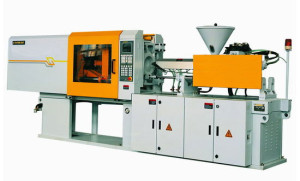Working As An Engineer
So, what does an engineer do all day anyway? Unlike other professions, where that question might be answered rather readily, engineering is a different animal. By definition, engineers are paid to solve problems that are grounded in science. In practice, engineers are doing everything from designing bridges, to writing code, to running Fortune 500 companies.
Work Environment
Some engineers wear ties, some dress casual, some where hard hats and jeans. Some engineers work in offices, some work in manufacturing plants, still others work in space. There are four main branches of engineering: Mechanical (includes Aerospace), Electrical (includes Computer), Civil, and Chemical. One could argue that Electrical and Chemical engineers tend to work in office/labs, Civil engineers work on site, and Mechanical engineers work all over the place. Of course, that is a very broad statement and there are many, many exceptions. So, you are encouraged to be open minded about the type of environment you are willing to work in. You may be surprised that a plant environment ends up being more appealing to you then a desk job (or vice verse) . You never know until you try.
Day-to-Day work
Job duties will be highly dependent on where you are at in the design cycle. Some engineers will work exclusively in a certain part of the design process (specialists) while others will take a project from start to finish (project engineers, design engineers). You probably won’t play the same role your entire career.
Companies hire engineers because of their problem solving capability and flexibility. Though relatively expensive, engineers can be put into many different roles based on the companies needs at that moment. Throughout the course of a career (or even over the course of week) an engineer might be an Analyst, Designer, Draftsman, Contractor, Diplomat, Inventor, Technician, Program Manager, etc.
Engineers almost always working in teams. The days of the solitary engineer working through a project or problem alone are gone. Today, 99% of all engineers work as a member of a team, whether made up of only engineers or a cross-disciplinary team of engineers, specialists and business people. Hone your skills at writing and get better at public speaking. These are skills you will need if you plan on moving forward in this industry. Engineering is a bad profession if you want daily written instructions. An engineer gets paid to THINK. That’s why you are getting paid so much. The answer will rarely be given to you. Best engineers are self-starters and self motivated.Yanked in many different directions at once. Must learn to prioritize. Engineering school is meant to prepare you for this kind of work environment.
Example
Let’s walk through the job responsibilities of a fake employee named Bob. Bob is a Mechanical Engineer in the Automotive industry. Now, a car requires pretty much every engineering discipline to go from concept to customer, so Bob has to have a general working knowledge of engineering (or he at least needs to to know where to go to for the answer). Bob is specifically responsible for delivering the instrument panel of the vehicle, which contains plastic parts, leather, steel reinforcements
What, ex actly, Bob is doing any given week will be based largely on where he is at in the product cycle of the automobile. It can take anywhere from 2-4 years for a vehicle to go from concept (sketches) to production. In the early phases, Bob will likely be working with the product designers and the business managers to provide feasibility on the proposed designs. This is an iterative process, so Bob will be attending numerous meetings where he provides expertise on packaging, manufacturing, and material selection and will then work to answer any questions that come up. He may need to go hunting for a supplier of a particular part if it is decided that the car will need it (he will leverage the purchasing organization to help find this source). He will also utilize his CAD designer to provide early concept feasibility. He will do all of this while guaranteeing that safety and cost considerations are met. The company likely has design rules and best practices to guide Bob, but he must always be thinking and be flexible. All decision will likely be presented up the management chain, so Bob has to be comfortable with public speaking and getting his idea across in a clear, concise manner. These reviews may find Bob at odds with upper management, so he needs to be persuasive if he feels that a change in direction is needed. The tools of his trade at this points will likely be CAD, email, phone calls, instant messaging, face-to-face meeting, web meetings, and various computer programs and databases. His main job is to keep communication going between all involved parties, tracking the process, and providing deep technical knowledge of the requirements.
actly, Bob is doing any given week will be based largely on where he is at in the product cycle of the automobile. It can take anywhere from 2-4 years for a vehicle to go from concept (sketches) to production. In the early phases, Bob will likely be working with the product designers and the business managers to provide feasibility on the proposed designs. This is an iterative process, so Bob will be attending numerous meetings where he provides expertise on packaging, manufacturing, and material selection and will then work to answer any questions that come up. He may need to go hunting for a supplier of a particular part if it is decided that the car will need it (he will leverage the purchasing organization to help find this source). He will also utilize his CAD designer to provide early concept feasibility. He will do all of this while guaranteeing that safety and cost considerations are met. The company likely has design rules and best practices to guide Bob, but he must always be thinking and be flexible. All decision will likely be presented up the management chain, so Bob has to be comfortable with public speaking and getting his idea across in a clear, concise manner. These reviews may find Bob at odds with upper management, so he needs to be persuasive if he feels that a change in direction is needed. The tools of his trade at this points will likely be CAD, email, phone calls, instant messaging, face-to-face meeting, web meetings, and various computer programs and databases. His main job is to keep communication going between all involved parties, tracking the process, and providing deep technical knowledge of the requirements.
Another year and many iterations later, Bob is kicking off tools. The design must be done with all requirements met. Now the company will need to invest millions in tooling (stamping machines, injection molding machines, assembly line fixtures, etc). This is likely a stressful time for Bob. Kind of like a painting, it is hard to say when a design is really done. There is always more to do, but Bob is running a business here and there are only so many engineering hours that you can put into the design. Bob minimize as many opportunities for failure as he can, but a perfect design is almost unbelievable Engineering experience judgement, and intuition pay off significantly here. Bob finalizes his design and puts “pencils down”.
 6 months later, Bob is standing in the mold shop where some of his parts are being built for the first time. This is just a trial, but the stakes are high. Based on what he finds, he may need to authorize tweaks to the tool and/or design in order to meet the requirements He will then take these parts to the next assembly line in the process; in this case, the instrument panel. He wants to make sure the entire system is coming together correctly. Bob likely has a make-shift office in the plant at this point since he has so much going on there. Finally, Bob will watch as his system makes its way to the final processing plan where the whole car is coming together. Once again, Bob is troubleshooting errors that are popping up and implementing changes.
6 months later, Bob is standing in the mold shop where some of his parts are being built for the first time. This is just a trial, but the stakes are high. Based on what he finds, he may need to authorize tweaks to the tool and/or design in order to meet the requirements He will then take these parts to the next assembly line in the process; in this case, the instrument panel. He wants to make sure the entire system is coming together correctly. Bob likely has a make-shift office in the plant at this point since he has so much going on there. Finally, Bob will watch as his system makes its way to the final processing plan where the whole car is coming together. Once again, Bob is troubleshooting errors that are popping up and implementing changes.
Another 6 months pass and the company is ready to launch the vehicle and start selling to the public. Bob has tweaked his design considerably, the parts and process have matured, and all tests have been completed. All of the involved assembly lines are capable of producing enough parts with the required amount of quality to support the (hopefully) enormous public demand for the product. It has been 3 years, but finally Bob is able to sit in a finished vehicle and cruise down the road. But there is no time to take a breath. The next version of the vehicle is already being designed and Bob needs to start providing feasibility.
Conclusion
It would be impossible to write a “day in the life” summary for every engineer out there. The only thing typical about engineering is that nothing is typical. The desire to work in a flexible, sometimes stressful, usually difficult, but rarely boring profession is must (if you are bored, it is time to move on).




